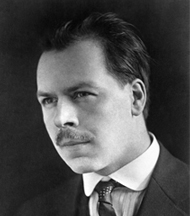Recently the discussion around the fruit and berry crop collection of VIR preserved at the Pavlovsk experiment station has reached a new phase. Reason for this - results of the audit conducted by the «independent expert group» under the Ministry of economic development. A part of expert conclusions was submitted to the general public during the video bridge that took place on the 24th of September 2010 in the press-centre «RIA Novosti». Our opinion has been already expressed on our website. Thanks to the good will of independent journalists administration of the Institute managed to receive «Conclusion» of the expert group. Institute`s staff members perceived ambiguously the document.
Let`s go back to the history of the question addressing presence and state of the unique fruit and berry crop collection of VIR at plot No. 2.
On the 6th of May 2010the Ministry of economic development dispatched a letter dated as of the 31st of March 2010 to the Institute according to the request of the Russian Government, which stated « information provided in the appeal of the N.I. Vavilov Institute didn`t find evidence».
Statements about the absence of the collection at plot No. 2 were repeatedly declared in mass-media by high representatives of the RZHS (Russian Housing Development Foundation):
А. Braverman, Director General of the RZHS: «results of audits conducted by the authorized state authorities in 2009 and 2010 showed that information about the presence of the field genebank is untrue», and «one part of the territory is plowed, another part is covered with grass». ( BELLONA )
А. Fursin, Vice-Director of the RZHS:
On these plots, we performed photophixation 3 times - when preparing the proposal, and when these plots have been already withdrawn. And now ... at the time when the dispute has intensified, once again. We have pictures ... everyone can come to see the state of these plots. They are indeed in terrible condition ... collections of weedy plants really exist there. ( Ekho Moskvy )
А.Anisimov, Vice-Director of the RZHS: «plots are not being used,buildings are being destroyed, that was the reason for taking a decision by the Government commission …». ( ZakS.ru )
To clear up the situation «on the 7th of September 2010 the Ministry of economic development of Russia addressed the President of the Russian Academy of Sciences Yu.S. Osipov with a request to assist in the examination of ornamental plant as well as fruit and berry crop collections preserved at the Pavlovsk experiment station of VIR by establishing an expert group at the Russian Academy of Sciences (RAS) to conduct an audit addressing the following issues:
1.Do the ornamental as well as fruit and berry crop plantations belong to the collection
2.Is it possible to determine the time of planting for these cultivars
3.Is it possible to re-locate ornamental as well as fruit and berry crop plantations without damaging them
In addition, the Ministry of Economic Development requested an expert opinion about the current state of these plantations and their uniqueness, including information on their distribution in Russia.
We would like to pay your attention on the following remarkable facts:
1.«An expert group non-affiliated with RAAS» included Ex-Director of VIR, academician of RAAS (Russian Academy of Agricultural Science),at present a staff member of the Institute of Agrophysics under RAAS V. Dragavtsev, well known in scientific circles by his «critical” remarks regarding the Institute for the last 5 years after his retirement.
2.Staff members of the RZHS V. Pyl`nev and N. Stepanov took part in expert group work and all its meetings at the Scientific center of RAS in Saint-Petersburg.
3.The Russian Housing Development Foundation and the Russian Academy of Sciences (RAS) have concluded a Cooperation Agreement aimed at achieving the targets on provision with economy-class housing and improvement of housing conditions of the Academy’s employees and preparing the Foundation’s proposals on use of the land plots provided by the Academy for housing and other development (RZHS official web-site )
The expert group and Co. have organized its short-term work in a curious way: they allocated 2 hours to audit (!!!) only a half of the total volume of the collection at the Pavlovsk station (without inviting collection curators (!!!), then during one day and a half it has been discussing results of the audit at the Scientific centere (!!!) of the Saint-Petersburg branch of RAS.
They considered it appropriate to allocate 40 minutes before lunch to the VIR Director, Professor N. Dzyubenko, and after lunch – additional 40 minutes to the Head of the department of fruit and berry crops, PhD-doctor (agricultural science) А. Sorokin as well as to the curator of stone fruit collection О. Radchenko, who presented the following documents on their request:
1.“Working registers of curators of stone fruit collection”
2.“Program and methodic of study of fruit, berry, subtropical nut crops and grapes“ issued by N.I. Vavilov Research Institute of Plant Industry (VIR), 1970
3.Orthophotograph Google map 2006
4. Cadastre plans of the plots No. 2 and No. 18 totals 71,4286 ha and 19,5079 ha No.No. 78:42:16415:22, 78:42:16402:1
5. Cadastre plan of the Pavlovsk experiment station
As a result of hot discussions the expert group stated:
1. A part of the plot No. 2 of about 13,2 ha (including stone fruits - 5,2; black current 1,5 ha; red current 2 ha; blue honeysuckle – 1,3 ha; ornamental plants – 1,8; actimidia – 0,37 ha; strawberry – 1 ha), without route network and shelter belts is occupied with fruit, berry crop and ornamental plant collections.
2. Stone fruits are more than 40 years old with single plantings of 2009, the age of current – about 30 years, the age of raspberry – about 15 years, the age of blue honeysuckle – no less than 25 years, the age of rowan – 20 years, the age of actimidia – 5 years.
3. Re-location is possible with risk of loss affecting up to 20% of accessions, for stone fruits – there is a risk of total loss. It should be taken into account the location of stone fruit collection is distinguished by soil and climatic conditions, the territory traditionally harbored fruit gardens and thus it was chosen by N.I. Vavilov for establishing the experiment station.
The re-location of some collection accessions will take, according to the expert group conclusion, from 2 (current, raspberry, blue honeysuckle, actimidia) up to 10-12 years.
Additionally, there will be needed to conduct organizational and technical activities on allocation of a new plot in the similar soil-climatic zone with certain hydrologic conditions as well as to elaborate a legal and legislative documentation, to prepare soil and to conduct transfer itself. In total the re-location process without damaging plants will take about 10 years.
And now - comments of VIR specialists addressing each of the issues of the “Conclusion”:
1.A part of the plot No. 2 of about 13,2 ha (including stone fruits - 5,2; black current 1,5 ha; red current 2 ha; blue honeysuckle – 1,3 ha; ornaments plants – 1,8; actimidia – 0,37 ha; strawberry – 1 ha), without route network and shelter belts is occupied with fruit, berry crop and ornamental plant collections.
As of October 2010 the plot No. 2 occupied except collection plantations indicated in the conclusion of the «expert group» with the collections of rowan, gooseberry, sea buckthorn, raspberry and blackberry.
Moreover, an inaccuracy was admitted in the name of one of the cultivars. That, what highly respected experts call "actimidia", is actually ACTINIDIA (Actinidia kolomikta), but may be this is a misprint? In this case, next time we would like experts to have read more carefully a very important for some specialists document before signing. Somewhere admitted misprint, but more serious, could negatively affect someone's fate.
It`s unclear, where figures indicating the area for each of the collections came from. It`s hard to imagine, how one can measure the territory of the field genebank occupied by collections or visually to determine an area needed for them for only two hours.
Below you can see the real areas occupied by fruit and berry crop collections of VIR.
| No. p\p | Cultivars | Area under collection (According to the expert group), ha | Area under collection (According to VIR), ha | Difference, ha |
| 1. | Stone fruits | 5,2 | 6,6 | -1,4 |
| 2. | Black current | 1,5 | 3,8 | -2,3 |
| 3. | Red current | 2,0 | 1,5 | +0,5 |
| 4. | Blue honeysuckle | 1,3 | 2,2 | -0,9 |
| 5. | Ornamental plants | 1,8 | 2,5 | -0,7 |
| 6. | Actinidia | 0,37 | 0,3 | +0,07 |
| 7. | Strawberry | 1,0 | 2,5 | -1,5 |
| 8. | Rowan | - | 0,1 | -0,1 |
| 9. | Gooseberry | - | 0,6 | -0,6 |
| 10. | Sea buckthorn | - | 0,6 | -0,6 |
| 11. | Raspberry and blackberry | - | 2,5 | -2,5 |
| Total: | 13,17 | 23,2 | -10,03 |
Thus the expert group “has overlooked” 10 ha under the collection. And here it`s not a misprint!
According to the international standards a field genebank includes except collection orchards: driveways, drain ditches, shelter belts and roads, fallow plots (for regeneration), discarded orchards (for stubbing) and nursery. In our case the territory needed makes:
<td2,7
| Item of the field genebank | According to the expert group | Really needed, ha |
| Fallow plots | - | |
| Nursery | - | 7,0 |
| Discarded orchards (for stubbing) | - | 8,0 |
| Roads and shelter belts | - | 2,0 |
| Total: | - | 19,7 |
So, instead of 13,5 ha offered by the expert group VIR needs at least 23,2+19,7 ha= 42,9 ha for a field genebank В . If necessary or on the request there can be done more detailed estimates based on scientific methodic and international standards for each of the items.
2. “Stone fruits are more than 40 years old with single plantings of 2009, the age of current – about 30 years, the age of raspberry – about 15 years, the age of blue honeysuckle – no less than 25 years, the age of rowan – 20 years, the age of actimidia – 5 years”.
The conclusion regarding the age of cultivars is, we are sorry, Respected Experts, made most unprofessional. To be clear it should be noted, the term stone fruits includes collections of such cultivars as sour cherry, sweet cherry, bird cherry, microcerasus, cherry-plum, plum, black thorn, apricot.
Collection and study of stone fruit crops have been a long-term subject of VIR research activities since the establishment of the Pavlovsk experiment station. The collection was replanted several times in the post-war period, namely in 1951-56, 1971-1975, 1989-91, 2004-2010.
Collections of sour cherry, sweet cherry, microcerasus and bird cherry were replanted/reconstructed in 2004-2010, so the age of the cultivars apriorican`t be more than7 years (see information1).
Collections of plum, cherry-plum and black thorn situated at the plot No. 2 include collection accessions replanted/reconstructed in 1984-1991 and in 2000-2009, i.e. the age of the oldest cultivars doesn`t reach 27 years (see information 2).
«…the age of the current –about 30 years…»
The collection of the black current occupies 5 plots, it was assembled in 1993, 1994-1996, 1998 and 2005-2008. Perhaps, members of the expert group were misled by the old collection plot of 1981. Collection accession were regenerated and secured at the plot No. 4. Its stubbing is planned for the autumn of 2011 (information 3).
«…the age of the raspberry - about 15 years…»
Raspberry – perennial crop with two year cycle of development of the above-ground part of the plant, so it`s simply impossible to visually estimate the age of the plantings. To do this it`s necessary to refer to the related documentation such as field and planting registers, what wasn`t done.
The statement, that «…the age of blue honeysuckle is no less than 20 years…», is only partially correct, since more than one third of the collection plots was assembled in the period 1996-1999.
«…the age of rowan – 20 years…»
The «oldest» rowan cultivars were planted out at the collection plot in 1999.
«…the age of Actinidia – 5 years»
Collection of Actinidia was assembled in 1972.
The expert group has lost sight of the gooseberry collection - one of the largest in the world - encompassing 242 accessions (521 plants) (see information 4).
3.«Re-location is possible with risk of loss affecting up to 20% of accessions, for stone fruits – there is a risk of total loss. It should be taken into account the location of stone fruit collection is distinguished by soil and climatic conditions, the territory traditionally harbored fruit gardens and thus it was chosen by N.I. Vavilov for establishing the experiment station».
The risk of total loss endangers not only stone fruits, but also collections of current, raspberry, blue honeysuckle, actinidia, re-location of which will take only two years according to the «expert group» saying. Even in ideal conditions with proper capacity building and staffing there will be needed 6-8 years for re-location, but taking into account the current state of the collection – it may take more than 10 years (information 3,information 4). Selection of the place concerns all plots occupied by collections of fruit, berry crops and ornamental plants preserved at Pavlovsk experiment station of VIR.
«The re-location of some collection accessions will take, according to the expert group conclusion, from 2 (current, raspberry, blue honeysuckle, actimidia) up to 10-12 years.
Additionally, there will be needed to conduct organizational and technical activities on allocation of a new plot in the similar soil-climatic zone with certain hydrologic conditions as well as to elaborate a legal and legislative documentation, to prepare soil and to conduct transfer itself. In total the re-location process without damaging plants will take about 10 years».
Maintenance of one accession in the field genebank according to specialists` estimates costs avg. 700 Euro (Smith&Livingston, 1997), the Institute hasn`t received and still doesn`t such money, as well as money for reconstruction of collections (regeneration and re-location to a new, preliminary prepared plot). However, thanks to professionalism, responsibility and enthusiasm of staff members of the Institute these works have been conducting and still are (information, photo).
“Additionally, there will be needed to conduct organizational and technical activities on allocation of a new plot in the similar soil-climatic zone with certain hydrologic conditions”.
Unfortunately, a "new plot" within the Pavlovsk experiment station cannot be found, except those that have been already occupied by orchards and nurseries. There are also no free lands appropriate for gardening in the Leningrad region.
WE GIVE ALL RIGHTS TO OUR READERS TO DRAW CONCLUSIONS BY THEMSELVES FROM ALL THAT WAS SAID ABOVE!
To be continued…





